<< Previous | Displaying results 6551-6560 of 6769 for "" | Next >>
Army Military Police guarding the boundaries of the Manzanar Relocation Center in California, one of ten relocation camps where American residents of Japanese ancestry were forcibly deported, April 2, 1942.
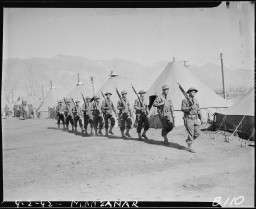
Japanese Americans hold a town hall meeting at the Manzanar Relocation Center in California, 1943.
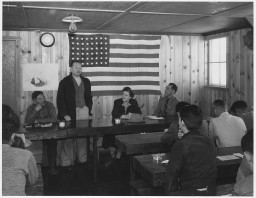
A group of nursery school children at the Heart Mountain Relocation Center in Wyoming, January 4, 1943. The Heart Mountain Relocation Center was one of ten relocation centers where Japanese Americans were forcibly deported.
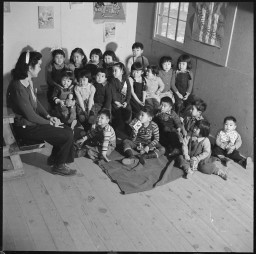
World War I (1914–18) saw the first use of poison gas as a weapon of war. In this oil painting, John Singer Sargent depicted the aftermath of a mustard gas attack on British soldiers during a battle in August 1918. A line of soldiers, with bandaged eyes injured by the gas, hold on to one another as they are led to medical treatment. Around them are rows of other soldiers injured by the effects of the mustard gas, which could cause injuries such as burns and temporary blindness. © IWM (Art.IWM ART…

Scene of destruction during World War I: panoramic view of the battlefield at Guillemont, September 1916, during the Battle of the Somme. © IWM (Q 1281)

Houses along the River Meuse damaged during the Battle of Verdun, December 1916. The battle was one of the longest and deadliest of World War I. © IWM (Q 67594)
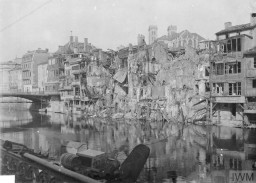
Surrounded by destruction, US soldiers of the 23rd Infantry fire a gun during World War I, 1918.
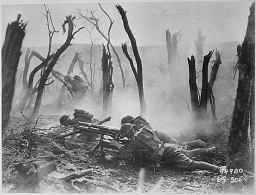
British troops in a trench cover the bodies of two fellow soldiers killed during the Battle of the Somme, November 1916. © IWM (Q 4393)
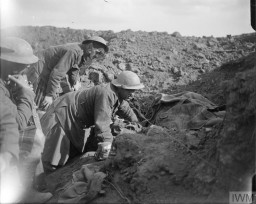
The first German troops to return from the conquests of Poland and France march through the Brandenburg Gate. Berlin, Germany, July 1940.
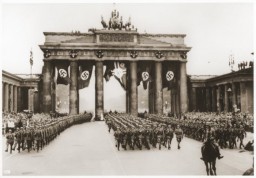
This photograph shows a group of SS officers at Solahütte, the SS retreat outside of Auschwitz. Pictured from left to right: Richard Baer, Dr. Josef Mengele, and Rudolf Höss. From Karl Höcker's photograph album, which includes both documentation of official visits and ceremonies at Auschwitz as well as more personal photographs depicting the many social activities that he and other members of the Auschwitz camp staff enjoyed. These rare images show Nazis singing, hunting, and even trimming a Christmas…
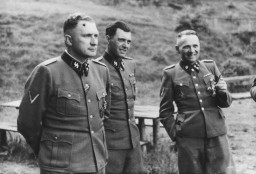
We would like to thank Crown Family Philanthropies, Abe and Ida Cooper Foundation, the Claims Conference, EVZ, and BMF for supporting the ongoing work to create content and resources for the Holocaust Encyclopedia. View the list of donor acknowledgement.